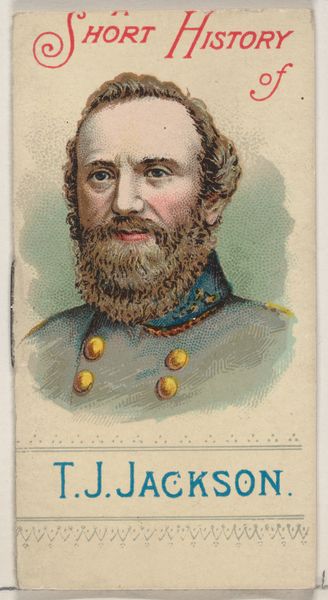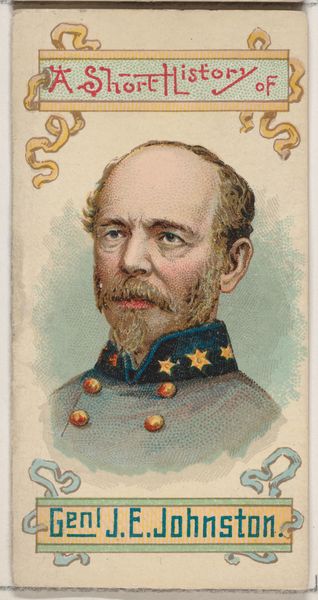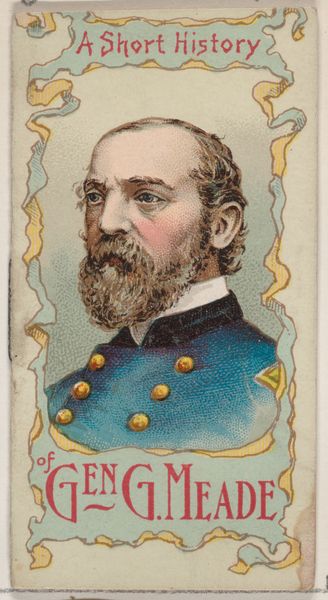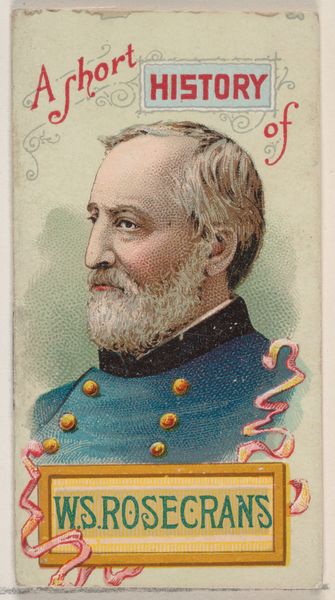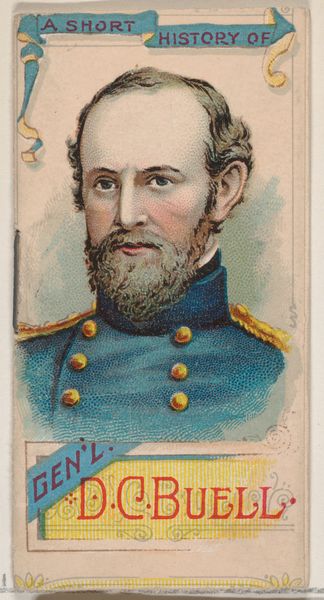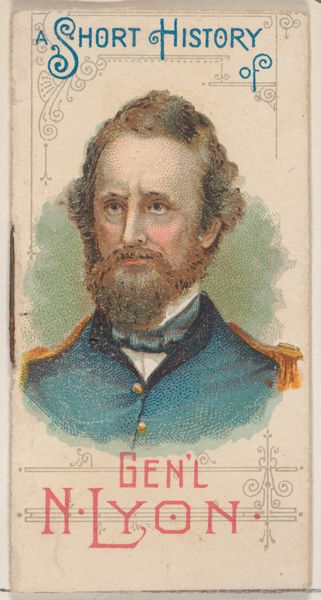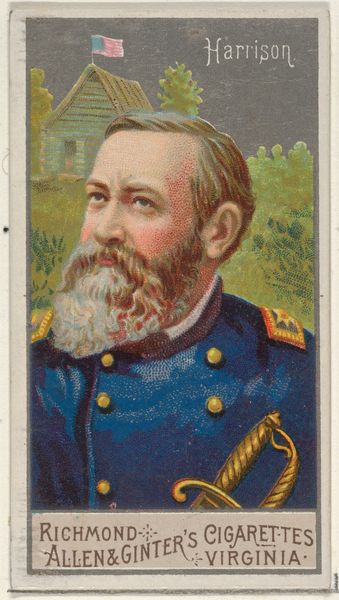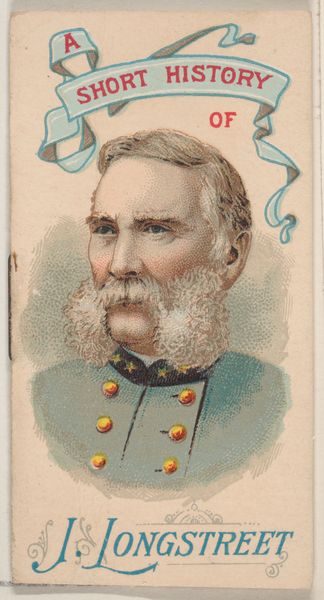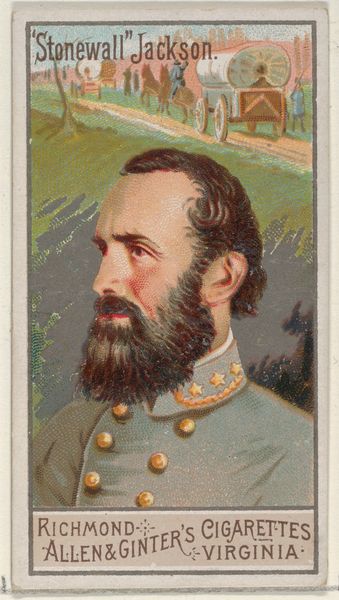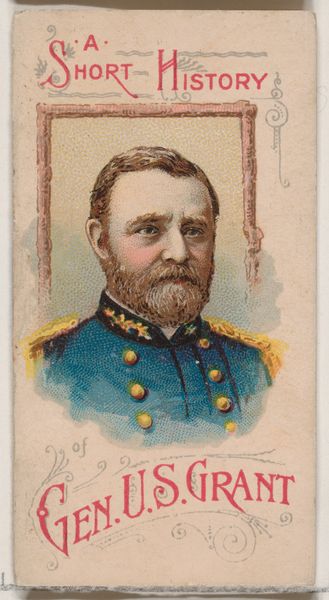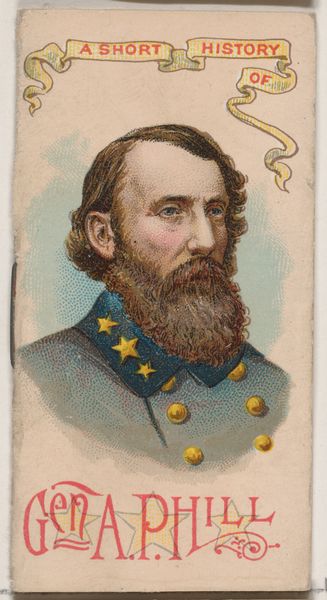
A Short History of General Richard Stoddart Ewell, from the Histories of Generals series of booklets (N78) for Duke brand cigarettes 1888
0:00
0:00
drawing, coloured-pencil, print, watercolor
#
portrait
#
drawing
#
coloured-pencil
# print
#
watercolor
#
coloured pencil
Dimensions: Overall (Booklet closed): 2 3/4 × 1 1/2 in. (7 × 3.8 cm) Overall (Booklet open): 2 3/4 × 2 7/8 in. (7 × 7.3 cm)
Copyright: Public Domain
Editor: So, this is a promotional print from 1888 titled "A Short History of General Richard Stoddart Ewell," made by W. Duke, Sons & Co., using watercolor, colored pencil, and printmaking techniques. I’m really struck by the portrait's almost mass-produced feel, yet you can see the delicate layering of colors. What's your take on it? Curator: This isn't simply a portrait; it's a commodity embedded in a specific industrial context. These cards, given away with cigarettes, were tools for branding and marketing. Consider the materials: cheap paper, readily available pigments, and a printing process designed for speed and scale. These choices speak volumes about the values and priorities of the producer. Editor: Right, it's definitely about the selling power rather than just the artistic expression, I get that. How does it fit into the wider landscape of commercial art at the time? Curator: Think about the labour involved. The artist likely mass-produced these images, churning them out under pressure. The commodification of Ewell's image through tobacco also points to the cultural normalization of figures from the Civil War era for a consumer base, specifically catering to a market keen on narratives of power and history packaged along with their everyday consumables. What effect do you think its availability as a cigarette card might have had? Editor: Hmm...it makes you consider the casual consumption of history. Almost like chewing over the past with your tobacco. That gives me a lot to consider, looking at who benefitted from producing it, and who it was targeting to sell too! Thanks! Curator: Precisely! Analyzing it in these terms reveals the complex relationship between art, commerce, and cultural memory. It shows that what something is made of can be just as important as what it depicts.
Comments
No comments
Be the first to comment and join the conversation on the ultimate creative platform.
